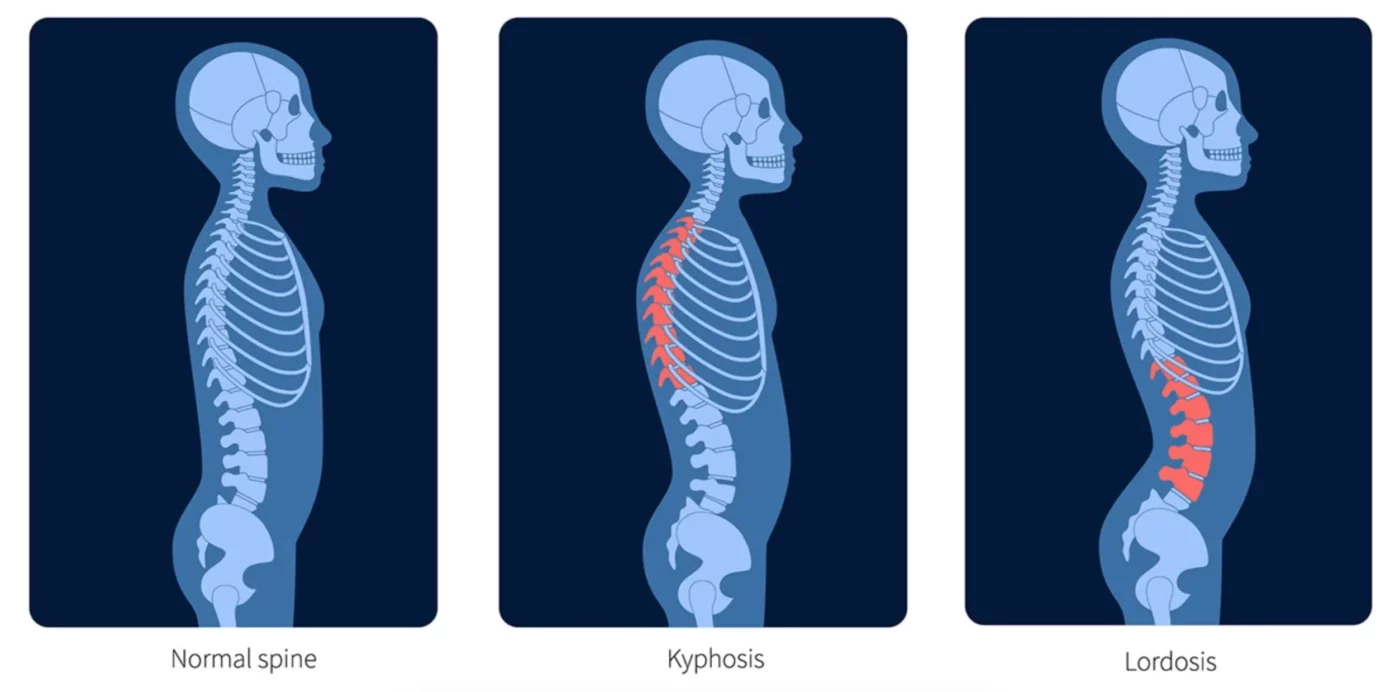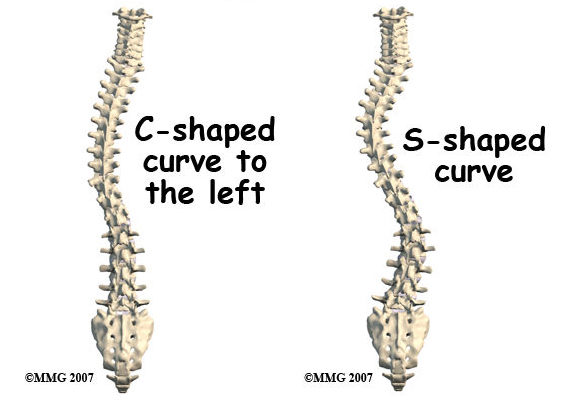Scoliosis is a condition characterized by an abnormal curvature of the spine, which can cause pain, discomfort, and limited mobility. It is a common misconception that pregnancy can cause scoliosis. However, there is no direct evidence to suggest that pregnancy itself causes scoliosis. In this article, we will explore the relationship between pregnancy and scoliosis, understanding the risk factors, the impact of hormonal changes, and the preventative measures that healthcare professionals can take to manage scoliosis during pregnancy.

O que é a escoliose?
Scoliosis is a musculoskeletal disorder that affects the curvature of the spine. It can occur in people of all ages, but it is most commonly diagnosed during adolescence. The curvature can be in the shape of an “S” or a “C” and can vary in severity. Scoliosis can cause physical deformity, pain, and limited mobility, and in severe cases, it can affect the functioning of the heart and lungs.

Pregnancy and scoliosis: Is there a connection?
There is no direct evidence to suggest that pregnancy causes scoliosis. Scoliosis is typically caused by genetic factors, abnormal bone development, or neuromuscular conditions. However, pregnancy can exacerbate existing scoliosis or lead to the development of symptoms in women who were previously asymptomatic.
Understanding the risk factors
While pregnancy itself does not cause scoliosis, certain risk factors can increase the likelihood of experiencing scoliosis-related symptoms during pregnancy. These risk factors include a family history of scoliosis, a previous history of scoliosis, or a pre-existing spinal condition. Women with these risk factors should be closely monitored during pregnancy to ensure early intervention if necessary.
The impact of hormonal changes during pregnancy
During pregnancy, hormonal changes occur in a woman’s body to support the growth and development of the fetus. These hormonal changes can affect the ligaments and muscles, making them more flexible. This increased flexibility can put additional stress on the spine, potentially exacerbating existing scoliosis or causing symptoms in women who were previously asymptomatic.
Pregnancy-related changes in the spine
Pregnancy-related changes in the spine can also contribute to the development or worsening of scoliosis symptoms. As the fetus grows, the center of gravity shifts, causing changes in posture and spinal alignment. This can lead to increased pressure on the spine and potentially worsen existing scoliosis.
Can pregnancy worsen existing scoliosis?
Pregnancy can worsen existing scoliosis in some cases. The hormonal changes, increased flexibility, and changes in spinal alignment can put additional stress on the spine, leading to increased curvature and symptoms. However, it is important to note that not all women with scoliosis will experience worsening symptoms during pregnancy.

Preventative measures for pregnant women with scoliosis
There are several preventative measures that pregnant women with scoliosis can take to manage their condition and minimize symptoms. These measures include maintaining good posture, engaging in regular exercise, wearing supportive footwear, and using supportive pillows while sleeping. It is important for healthcare professionals to educate pregnant women with scoliosis about these preventative measures to ensure optimal management of their condition.
The role of healthcare professionals in managing scoliosis during pregnancy
Healthcare professionals play a crucial role in managing scoliosis during pregnancy. They should conduct a thorough assessment of the woman’s medical history, including any previous history of scoliosis or spinal conditions. Regular monitoring of the woman’s spinal curvature and symptoms should be conducted throughout the pregnancy to ensure early intervention if necessary. Healthcare professionals should also provide education and support to pregnant women with scoliosis, helping them understand their condition and providing guidance on preventative measures.
Monitoring and treatment options for pregnant women with scoliosis
Regular monitoring of spinal curvature and symptoms is essential for pregnant women with scoliosis. This can be done through physical examinations, X-rays, or other imaging techniques. If the curvature worsens or symptoms become severe, treatment options may be considered. These options include physical therapy, bracing, or in severe cases, surgery. However, the decision to pursue treatment during pregnancy should be carefully weighed, taking into consideration the potential risks and benefits for both the mother and the fetus.
The importance of prenatal care and early intervention
Prenatal care and early intervention are crucial for pregnant women with scoliosis. Regular check-ups with healthcare professionals can help identify any changes in spinal curvature or symptoms early on, allowing for timely intervention if necessary. Early intervention can help manage symptoms, prevent further progression of scoliosis, and improve the overall well-being of the mother and the fetus.
Conclusão
While pregnancy itself does not cause scoliosis, it can exacerbate existing symptoms or lead to the development of symptoms in women who were previously asymptomatic. Understanding the risk factors, the impact of hormonal changes, and the preventative measures that can be taken are essential for healthcare professionals in managing scoliosis during pregnancy. Regular monitoring, education, and support are key in ensuring optimal management of scoliosis and promoting the well-being of pregnant women and their babies. By working closely with healthcare professionals, pregnant women with scoliosis can navigate their pregnancy journey with confidence and minimize the impact of scoliosis on their daily lives.
Referências
- Weinstein SL, Dolan LA, Cheng JC, et al. "Adolescent idiopathic scoliosis" (Escoliose idiopática do adolescente). Lancet. 2008;371(9623):1527-1537. doi: 10.1016/S0140-6736(08)60658-3.
- King HA, Moe JH, Winter RB, et al. “The selection of fusion levels in thoracic idiopathic scoliosis.” Journal of Bone and Joint Surgery - Volume americano. 1983;65(9):1302-1313. doi: 10.2106/00004623-198365090-00009.
- Negrini S, Donzelli S, Aulisa AG, et al. “2016 SOSORT guidelines: Orthopaedic and Rehabilitation treatment of idiopathic scoliosis during growth.” Escoliose e doenças da coluna vertebral. 2018;13:3. doi: 10.1186/s13013-017-0145-8.
- Kikanloo SR, Tarpada SP, Cho W. “Idiopathic scoliosis: Review of diagnosis and management.” Clínica de Cirurgia da Coluna Vertebral. 2019;32(3):120-126. doi: 10.1097/BSD.0000000000000781.
- Donzelli S, Zaina F, Negrini S. “Scoliosis and pregnancy.” Jornal Europeu de Medicina Física e de Reabilitação. 2017;53(2):191-196. doi: 10.23736/S1973-9087.17.04553-1.
- Negrini A, Donzelli S, Negrini S. “Pregnancy does not increase the risk of progression of idiopathic scoliosis.” Jornal Europeu da Coluna Vertebral. 2015;24(6):1392-1396. doi: 10.1007/s00586-015-3805-2.
- Katzman WB, Wanek L, Shepherd JA, et al. “Age-related hyperkyphosis: Its causes, consequences, and management.” Jornal de Fisioterapia Ortopédica e Desportiva. 2010;40(6):352-360. doi: 10.2519/jospt.2010.3099.
- Mannion AF, Troke M. “A comparison of spinal mobility and posture in back pain patients and matched controls.” Fisioterapia. 1999;79(4):346-355. doi: 10.1093/ptj/79.4.346.
- Lonner BS, Ren Y, Czaprowski D, et al. “The impact of scoliosis and its treatment on pregnancy outcomes: A review.” Jornal de Ortopedia Pediátrica. 2016;36(Supplement 1). doi: 10.1097/BPO.0000000000000753.
- Karol LA, Johnston CE, Mladenov K. “The effect of scoliosis fusion on pregnancy and pregnancy outcome.” Lombada (Phila Pa 1976). 2006;31(20):2177-2185. doi: 10.1097/01.brs.0000232806.98754.68.
- Janicki JA, Alman B. “Scoliosis: Review of diagnosis and treatment.” Paediatrics & Child Health. 2007;12(10):771-776. doi: 10.1093/pch/12.10.771.
- Boulanger M, Richards JG, Hill DL, et al. “Pregnancy and the risk of scoliosis progression in adult patients: A review of the literature.” Journal of Women’s Health Physical Therapy. 2018;42(2):65-72. doi: 10.1097/JWH.0000000000000102.
- Simony A, Hansen EJ, Christensen SB, et al. “Predictive factors for the progression of adolescent idiopathic scoliosis during pregnancy: A prospective cohort study.” Deformidade da coluna vertebral. 2019;7(2):230-237. doi: 10.1016/j.jspd.2018.08.010.

